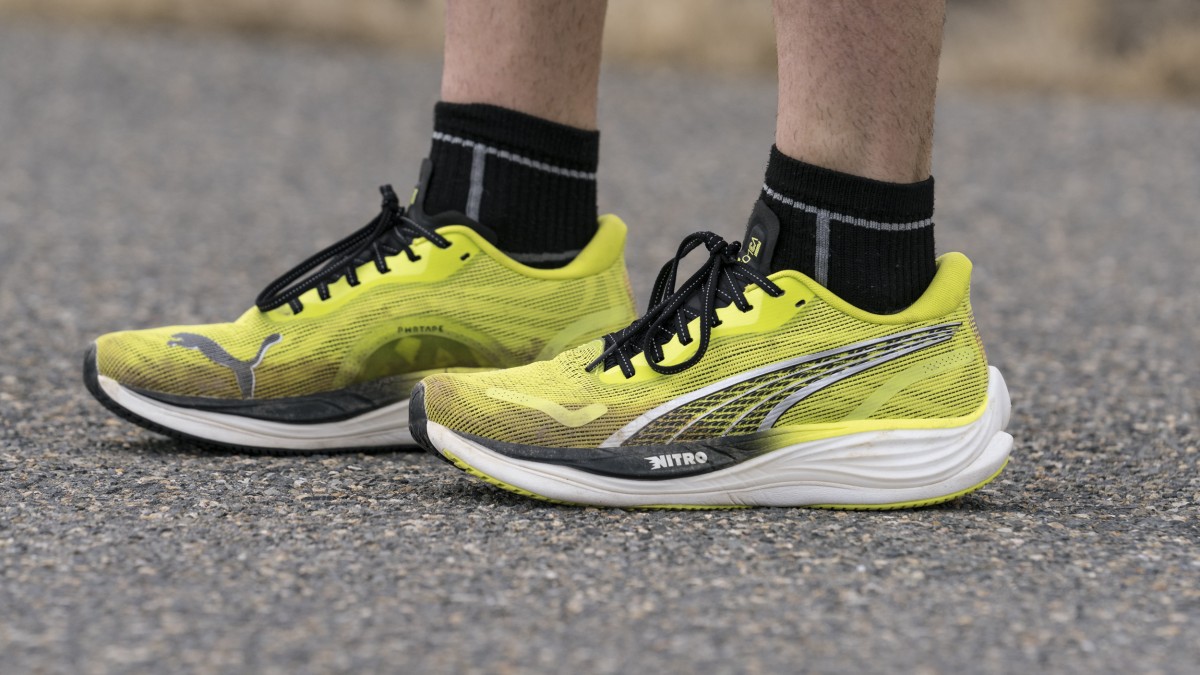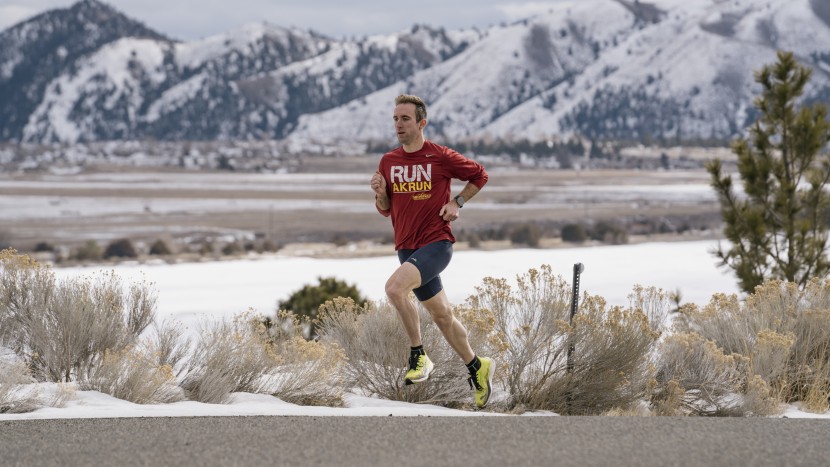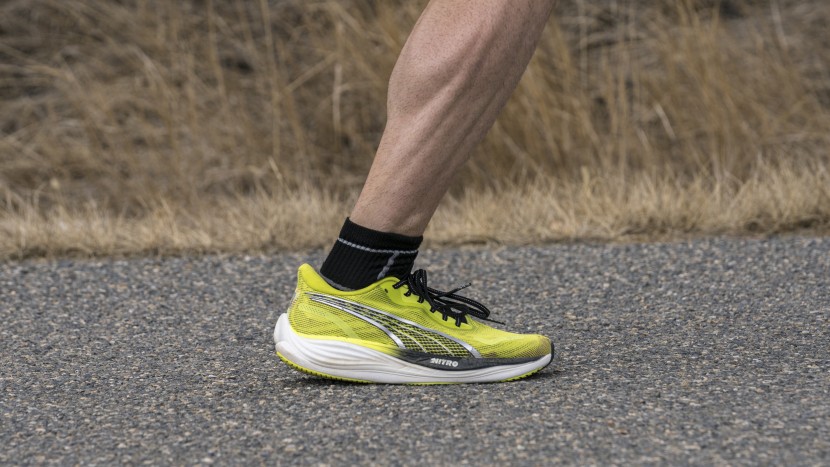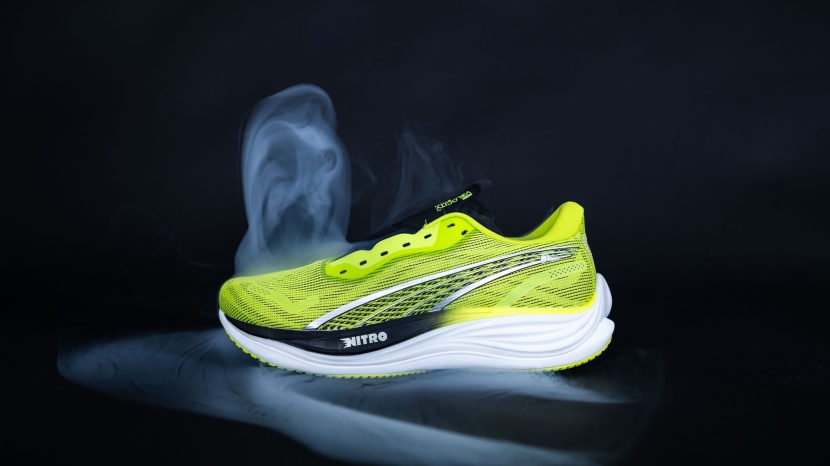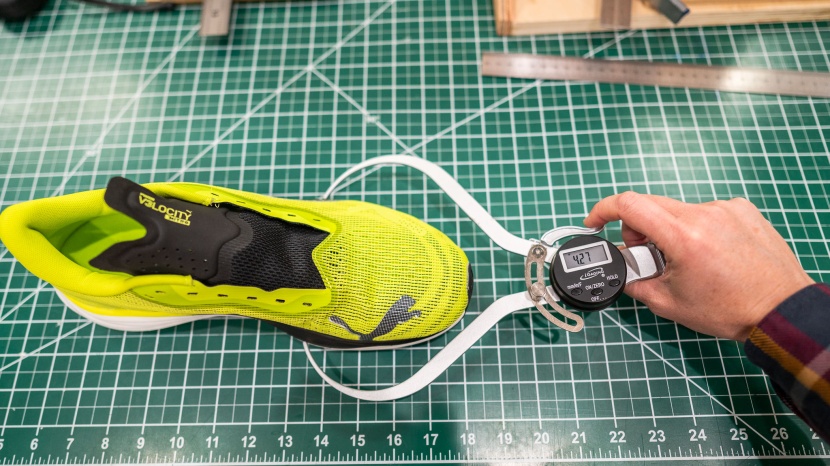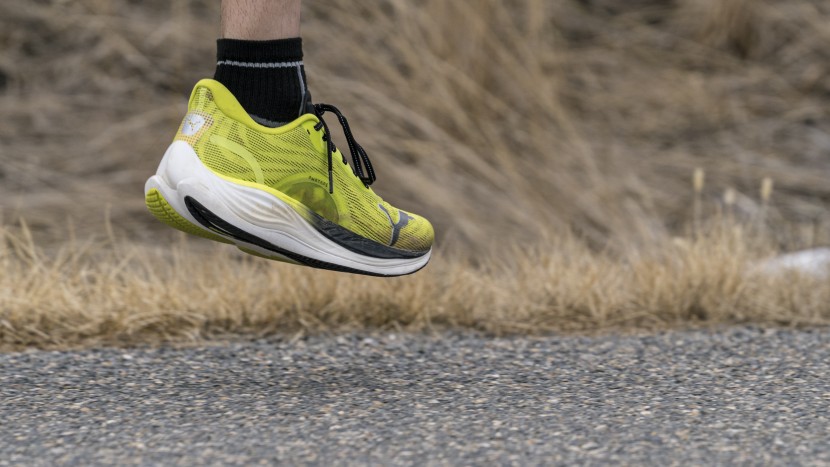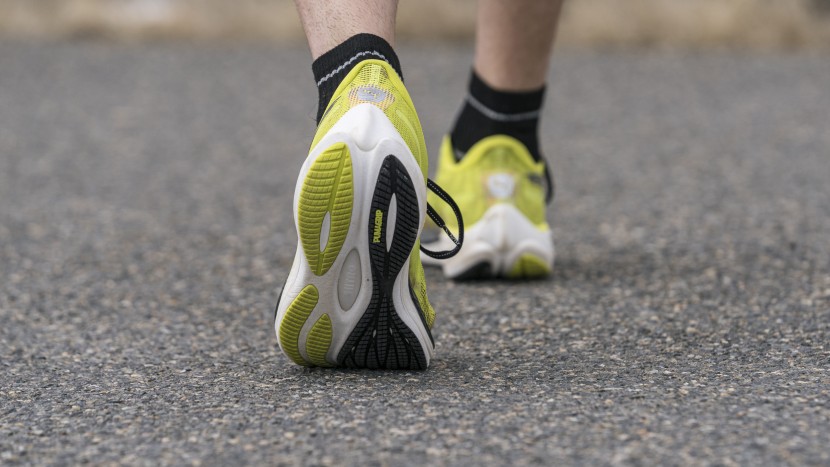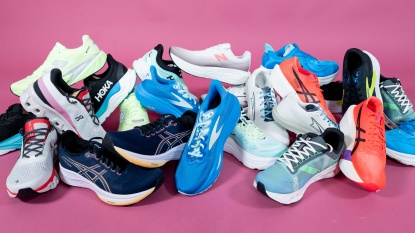
Our Verdict
Our Analysis and Test Results
The Puma Velocity Nitro 3 refines what we loved about the last version. It now has everything we want in a daily trainer: great cushioning, solid responsiveness, relatively low weight, and a comfortable upper. Puma addressed our (minor) concerns with the last model by adding a bit more NITRO foam underfoot and making the upper a bit more breathable. Sure, we've run in lighter, faster, or more cushioned shoes. But very few are this good all around while still staying affordable.
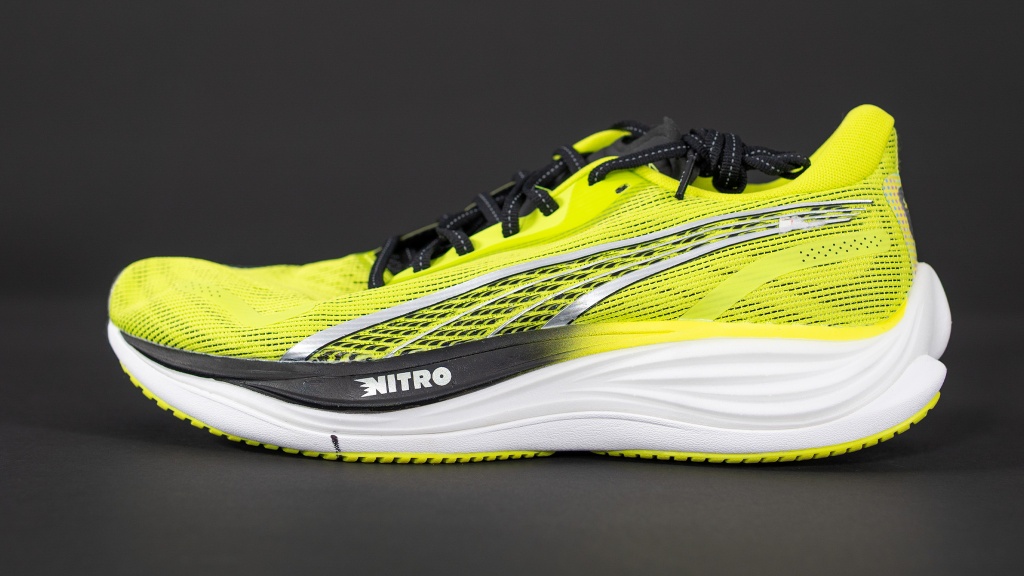
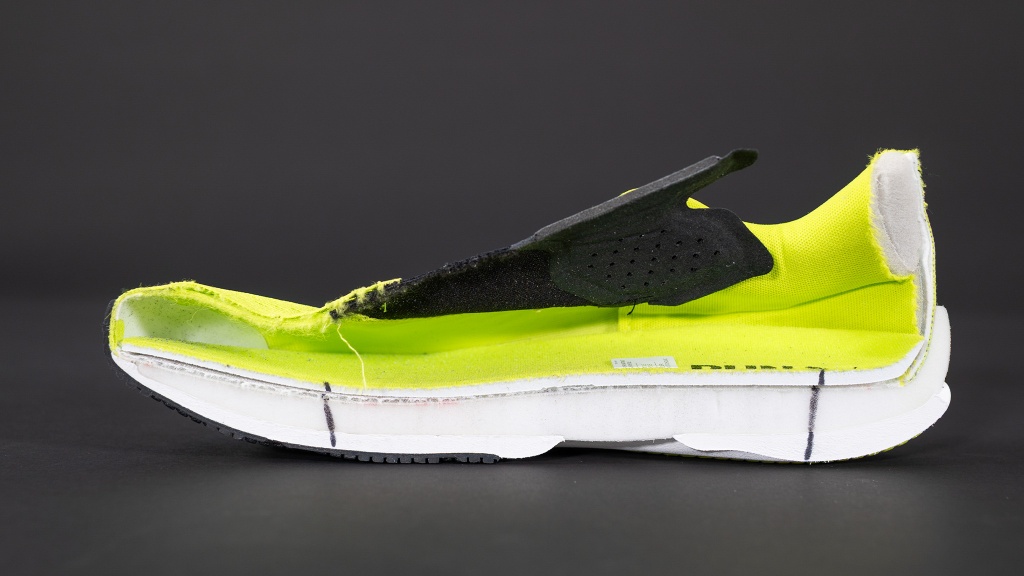
Cushioning
Puma added several millimeters of foam to the Velocity Nitro 3, giving it 38 mm in the heel and 27 mm in the forefoot (up from 35 mm and 25 mm in the last version). That addition came almost entirely in the form of supercritical NITRO foam, which we love. It makes for a smooth landing, excellent impact mitigation, and good energy return. The distribution of EVA foam on the lower portion of the midsole promotes a smooth transition through the foot.
Puma claims an 8 mm drop, but we measured 11 mm in a US men's size 10.5 in our standardized testing. That's typical for a daily trainer, and this shoe runs like it. The heel feels more built up than in the last version. Previously, the Velocity Nitro felt like it had a lower drop than we measured in the lab. We don't mind the difference and actually prefer it during longer runs.
The cushioning didn't score the highest in our lineup, but we wouldn't expect a daily trainer to outperform maximalist cushioning-oriented shoes. In past testing sessions, we loved using the previous Nitro 2 for daily runs up to about an hour, but we wanted more cushioning when we ran longer. We have changed our tune in the Nitro 3. The additional foam does more than enough to keep our legs fresh over 90+ minute efforts — we don't hesitate to pull these on for the long run.
The NITRO foam makes for comfortable landings, and we particularly enjoyed the bounce when running faster than marathon pace. We found threshold workouts to be very comfortable in this shoe. The foam compresses well and rebounds quickly but doesn't feel unstable. It's a nice balance, which we want in a daily trainer.
Upper Comfort
The updated upper is more breathable than the last iteration. It still provides excellent lockdown from heel to toe. The laces are easy to use and adjust. Plus, they resist slippage for runners who don't double knot.
The tongue is fine and prevents hotspots well, although we wouldn't mind a slight adjustment to the shape at the top of the foot. We noticed that the tip of the tongue would rub against the front of our ankles when we wore low, ankle-height socks. It didn't result in any hotspots, but it did lead to some minor chafing throughout a long run. If you wear crew-height socks or taller, that likely won't matter to you. The heel fit is excellent, providing good retention without any rubbing.
The most significant change here is the breathability. The Velocity loses a bit of the plush knit feel from the last iteration of the shoe in order to breathe better. We think it's a good tradeoff. We had no heat regulation issues in temperatures ranging anywhere from 10-80 degrees Fahrenheit.
We've found Puma's shoes often run a bit narrow in the forefoot. The Velocity Nitro 3 is no exception and feels snug in the toe box. That feeling correlates with our standardized lab testing, where the Velocity Nitro 3 recorded one of the lowest toe-box volumes in our entire lineup. Runners with high-volume feet will likely find the toe box too restrictive.
Stability
The increase in stack height does mildly reduce the stability of the shoe. It's not a huge change, but the low-slung feeling of the last version is no more. This shoe is still confident on loose terrain and does well on even ground, but its narrow profile and slightly taller stack height reduce overall stability.
This shoe is pretty average in terms of support. The strip of PWRTAPE on the medial side of the midfoot upper helps provide a bit of support around the arch, but at the end of the day, it's still a neutral shoe. This isn't the best choice for runners with stability needs.
Responsiveness
Let's revisit the bounce of the NITRO foam. The foam distribution in the shoe provides a smooth transition and snappy toe-off. It's not quite as snappy as a plated shoe or one with an aggressive rocker, but it's enough for fast strides or hill sprints.
For one-shoe runners, this pair can handle workouts, and you could race in it as well. It has above-average responsiveness in our lineup. Obviously, it's not as fast as a more dedicated race shoe, but it does get the job done. While shoes like the Saucony Endorphin Speed 4 or Adidas Adizero Boston 12 also get outstanding responsiveness from their supercritical foams, the main difference is in stiffening and geometry. Those shoes use carbon plates or infused rods paired with aggressive rockers to direct your motion — the Velocity Nitro 3 doesn't. That results in a shoe that isn't as propulsive. While those shoes feel like they're working to keep you on pace during hard efforts, it comes at the expense of daily comfort. We much prefer the Velocity Nitro 3 for easy runs.
While we think this shoe can handle speed days well, there are better options if you're looking for a shoe to complement race-specific workouts. On the other hand, this is an excellent choice if you want one shoe to run in daily, whether that means a leisurely cruise or a hard track session.
Weight
This is a daily trainer; we don't expect it to be the lightest shoe. It weighs in at 10.07 ounces, which is about average for the group, and we feel ok with the weight-to-comfort ratio that Puma has accomplished here.
While we wouldn't mind a little weight reduction, the shoe does not feel heavy compared to its competitors, and we barely noticed it on our feet.
Traction
This shoe has some of the best traction in our lineup. The PumaGrip outsole grabs on surfaces ranging from loose dirt to greasy trails to icy roads. That confidence is well worth the weight penalty. This is the shoe we grab whenever we're expecting less-than-ideal conditions.
Should You Buy the Puma Velocity Nitro 3?
We recommend this shoe if you want an affordable and versatile daily trainer. For your money, you get responsive cushioning, a great fit, and great grip. This shoe will handle any run you throw at it. Plus, this is the perfect travel trainer for exploring new places on easy runs or ripping workouts with a local running club. We think this shoe gives you the best overall value for your dollar.
What Other Running Shoes Should You Consider?
For runners who want more snappiness, the Puma Deviate Nitro 3 is a similar shoe, but with more NITRO and a carbon plate for a faster ride. The lighter weight and more responsive feel may be interesting to those looking for that additional edge to push their runs further or faster. The Saucony Ride 18 is a similarly scoring shoe that offers a wider toe-box, and although it is a bit less versatile, it is similarly reliable and comfortable.


